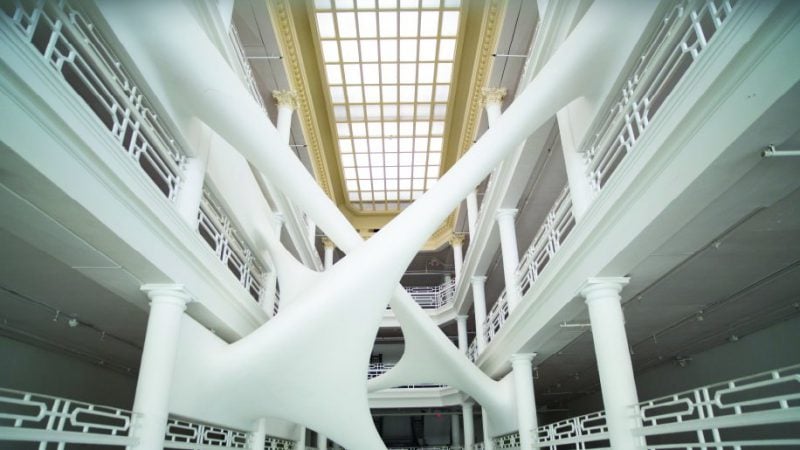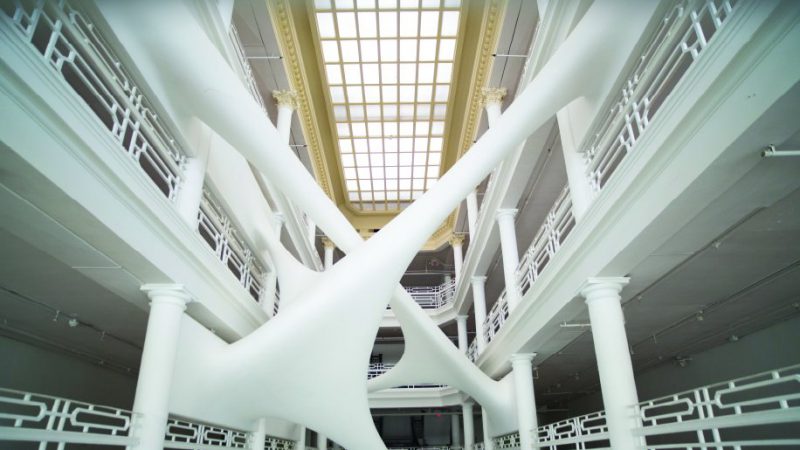Chic Choices: When Meetings Get the Creative Bump
Creative event organizers areconstantly on the prowl for coolvenues for that maximum buzz
June 1, 2019


When it comes to meetings, the where is as important as the what. No matter if it’s a meeting of healthcare professionals or Midwestern meat distributors, it takes serious investment and planning by those creating the event, plus time and money for attendees to attend. It has to be worth it for all involved and that involves a small but critical factor: The Wow.
Recent trends in meetings show these gatherings need to be purposeful, pliable and push the envelope. Attendees will expect pizazz, whether that comes from the destination itself, the venues chosen for events, or entertainment at the events; and they will expect elements of personalization – choices for activities, choices for comforts and technology they can customize, according to event management solutions provider Aventri, formerly eTouches.
Attendees Are Consumers
According to a study of nearly 9,000 meeting participants in the second Decision to Attend Study from the International Association of Exhibitions and Events, 78 percent of respondents said destination was the most important factor in deciding whether to attend a meeting, second only to education (92 percent). Networking opportunities came in third at 76 percent.
Since the destination is the number two driver for meetings attendance – and with all the world as the stage – meetings of all kinds can boost their “wow” factor with just a little digging and out-of-the-box thinking.
The most popular meeting and incentive destinations around the world in the 2018 Global Destination Index, compiled by destination management company Global DMC Partners, reads like a who’s who of the usual meeting city suspects: Paris, Amsterdam and Munich are the top three spots, with Vienna, London and Rome predictably in the top 10. In the US, Las Vegas, Orlando and Chicago perennially jockey for the top three destinations, and New York, San Francisco and New Orleans are invariably on the list as well.
These are among at least a dozen US cities that are in the so-called first-tier category of meetings destinations. They all boast clear advantages of popularity, easy access and navigation, a convention center with at least a half-million square feet, at least 10,000 hotel rooms – many in chain brand properties, abundant dining and entertainment options and that little intangible called cachet. No one would argue that Chicago, Las Vegas and Orlando are first tier cities, yet they couldn’t be more different in location and personality.
World as Oyster
While there is no doubt that cities like Paris, New York, London and Rome provide astounding backdrops for any meeting with or without leisure attached, costs involved often make them prohibitive for planner and attendee alike. However consider for a moment some up and coming second-tier alternatives on Global DMC Partners’ 2019 Meeting & Incentive Destination Hot List that allow for cost savings while packing in the wow: 1. Costa Rica2. Bahamas 3. Malta 4. Puerto Rico 5. Morocco 6. Croatia 7. St. Lucia 8. Denver/Colorado Springs 9. South Africa 10. Thailand
Indeed, the concept of second- and third-tier cities and destinations is something high on the minds of meeting planners who must find a way to mix all “wants” and keep meetings affordable for all.
Cvent, a leading market maker in meetings, events and hospitality, releases an annual list of top meeting destinations compiled by sourcing activity through the Cvent Supplier Network that accounts for some 40 million room nights worldwide and $14.7 billion of business.
“This year, secondary cities like Guangzhou, China, and Hyderabad, India, on the APAC list, and Aurora, CO, and Burlingame, CA on the US list, are making their first appearance and are helping to drive their local economies by attracting group business to their locales,” says Chris McAndrews, VP of marketing for the Cvent Hospitality Cloud.
Second-tier cities bolster the meetings markets with smaller metro areas, smaller facilities, easier group navigation and greater affordability. While a second-tier destination may have fewer hotel rooms and more limited meeting/exhibit space, and may be a bit more inconvenient or expensive for airlift, it may still rank high on attraction, cachet and amenities.
For meeting planners, there are a lot of boxes to be checked before finding the right destination for creating a meeting that will matter. According to Maritz Global Events, the top ten considerations for such choices come down to: accessibility, ease of doing business, city and hotel infrastructure, meeting venue capacity, transport infrastructure, carbon footprint, legislation and regulation, security and safety, community maturity and degree of financial support available.
“Finding the perfect match is challenging. You can’t have space, rates, dates all in perfection. You have to give somewhere,” advises Christine Coate, director of operations at Maritz. “Everyone wants the unique experience. But they also want reliability and great service. So, it’s about getting creative, about hiring a DMC that can create some local flavor. And you can spend a lot of money for this and come up with a great bang for the buck.”
Cool in the ’Hood
No matter where the meeting is held, it can easily find that “cool” factor with a little creative thinking and some research. A number of platforms currently service this need and match meeting requirements with such unusual surroundings as a farmhouse or loft or rooftop garden in a desired city. These include such companies at Peerspace, Splacer and Spacebase.
Meanwhile, unconventional “wowing” venues can be found in any city, if you know where to look. Here are just a few, offered by Andy Johnston, president and creative director of The Idea Group in Atlanta.
Urban Graffiti Party – This works wonderfully in vacant buildings, warehouses or converted spaces. Local graffiti artists decorate walls with the theme, company name, product, etc., to define the space and the character of the meeting. Then the attendees can try their own hands at urban art.
Art Galleries, Art Schools – In galleries, the art is static – finished and on the wall. But art schools are dynamic, active works in progress. In this venue, a meeting’s key content gets put on canvasses as audiences physically move from idea to idea. Local art students create instant, interpretative masterpieces during the event, with the subjects tied to the theme.
Airport Tarmacs & Hangars – Many small, suburban or commuter airports close at dusk, allowing an event to be staged right next to the runway. An environment defined by planes is great for announcing a launch.
Hot Nightclubs in the Daytime – As the hottest nightclubs in town will sit empty during the day, these make easy spots for a daytime event. All the lighting, sound and food facilities are there – plus loads of ambience and techno efx. Add a real DJ and a simple luncheon becomes a spectacular event.
Parking Garages – The top level of most metro parking garages will be open, vacant and have the best view of the city skyline. An added bonus is easy, free parking for the attendees.
Parking Lots – A variation on the theme: There’s always a parking lot near the biggest, most expensive venues. Park food trucks in a circle to define the area. Put a live band in the middle and it’s a party. Local classic and antique car clubs can chime in with models that can be positioned to create an attraction or talking point. Or they can be arranged in rows to look like a drive-in theater as attendees sit in the cars and look at a big screen for a structured session. Whatever the need, cool is in the air. For finding innovative meeting sites, it’s simply a matter of noticing.




